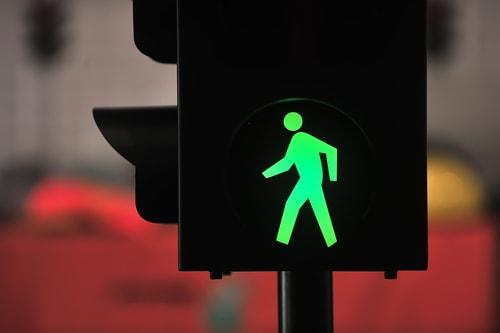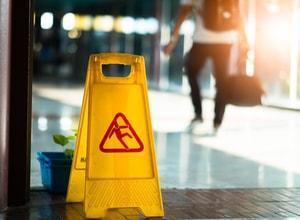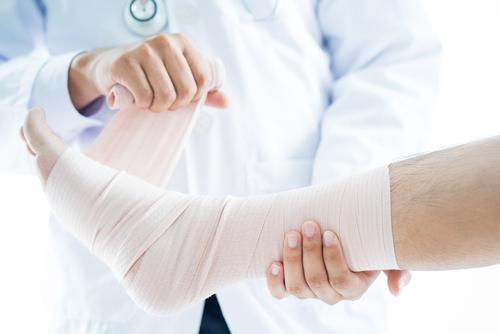Follow Us |Facebook
Call or Text for a Consultation
Recent Blog Posts
Requirements for a Wrongful Death Claim
 After a loved one passed away, it is the family who celebrates their life. After a wrongful death, it is the same parties that fight for justice. Although a lawsuit will not bring back your loved one, suing the company or people responsible for their death can bring closure and hold them responsible.
After a loved one passed away, it is the family who celebrates their life. After a wrongful death, it is the same parties that fight for justice. Although a lawsuit will not bring back your loved one, suing the company or people responsible for their death can bring closure and hold them responsible.
What Is A Wrongful Death?
Similar to that of a personal injury lawsuit, a wrongful death lawsuit is classified by the negligence of others. What is different is that the family members sue for their suffering and financial burden of losing a loved one unexpectedly. Only heirs and beneficiaries can sue for wrongful death. Most common causes of wrongful death are,
- Car accidents,
- Workplace accidents,
- Medical malpractice,
- Criminal activity, and
- Product liability.
There are four requirements for a wrongful death claim:
Preventing Pedestrian Accidents
 A pedestrian is considered a person who is not utilizing a motor vehicle. People go to the streets on foot to get to a destination or even to get exercise in the form of a walk or run. Despite safety precautions from motorists, over 5,000 pedestrians were killed during an auto accident in 2015 according to the Centers for Disease Control and Protection. Even more pedestrians were injured, so in the case of an auto accident with a pedestrian, who is responsible?
A pedestrian is considered a person who is not utilizing a motor vehicle. People go to the streets on foot to get to a destination or even to get exercise in the form of a walk or run. Despite safety precautions from motorists, over 5,000 pedestrians were killed during an auto accident in 2015 according to the Centers for Disease Control and Protection. Even more pedestrians were injured, so in the case of an auto accident with a pedestrian, who is responsible?
It is important for drivers and pedestrians to be mindful of each other. Here are steps each party can take to lower their chances of getting into a potentially fatal accident.
Vehicles
- Obey the speed limit - 30mph speed limits are not there to annoy, but to keep everyone safe. The road may be unsafe to drive at higher speeds, or the low-speed limit may be there because the area is residential or there is a school. A slower speed gives you a higher reaction time if a child suddenly crosses the road.
Slip and Falls in the Winter
 Winter conditions make functioning daily more dangerous. Slips and falls are one of the most common accidents and they can result in a variety of injuries from scrapes and bruises to breaks and fractures. What is important in a lawsuit following a slip and fall is negligence on behalf of the property owner. This can be a business, private property, or public government property that you fall on.
Winter conditions make functioning daily more dangerous. Slips and falls are one of the most common accidents and they can result in a variety of injuries from scrapes and bruises to breaks and fractures. What is important in a lawsuit following a slip and fall is negligence on behalf of the property owner. This can be a business, private property, or public government property that you fall on.
What Is Negligence
Negligence is when a person could have done something about a situation, failed to do so, and a person got injured because of that failure. A couple examples of negligence are:
- A driver going significantly over the speed limit and gets in a car accident;
- An accidental overdose of medicine administered by a health provider; and
- A business not mopping up a spill and someone falls.
Safety Tips for Motorcyclists
 Operating a motorcycle is an exciting way to get around. However, according to the National Motorcycle Institute, driving a motorcycle is 27 times more dangerous than operating a car. Unlike a car or truck, as a driver, you are completely exposed to the environment around you. There are precautions like gear and helmets that can help keep motorists safe, but they only help if you wear them.
Operating a motorcycle is an exciting way to get around. However, according to the National Motorcycle Institute, driving a motorcycle is 27 times more dangerous than operating a car. Unlike a car or truck, as a driver, you are completely exposed to the environment around you. There are precautions like gear and helmets that can help keep motorists safe, but they only help if you wear them.
Does a Helmet Really Make a Difference?
Yes, wearing a helmet is 37 percent effective in preventing death and 67 percent effective in preventing brain injuries in a road accident. Protecting yourself is one thing, but being mindful on the road can prevent accidents and other people being injured. Addition to personal safety, here are some safety tips for operating a motorcycle. Be responsible: Bikers get a bad reputation of being mean-spirited misfits, but even the most grisly looking motorcycle rider can practice the rules of the road. As you would in a car, follow traffic lights and signs unless otherwise instructed by a member of law enforcement. Always use your turn signals and keep a reasonable distance between other vehicles. Remember that on a motorcycle you may be harder to see for some drivers. Wear bright clothing or reflectors to help others see you. Stay sober: The same rules for operating a car apply for driving a motorcycle when it comes to being under the influence of a substance. Motorcycle riders are almost three times more likely to be involved in an alcohol-related fatal accident than other vehicles on the road. Alcohol and other substances can alter your perception, making it a dangerous time to get on a motorcycle. Be educated: A motorcycle is a specialized machine, and like most machines, require knowledge to operate to one’s best ability. Taking a motorcycle rider course is not required by law in the state of Illinois, but if you are over the age of 18, it allows you to waive the written and driving portions of obtaining a motorcycle license. Another benefit of taking an Illinois Department of Transportation approved course is that you may be eligible for a discount on your motorcycle insurance.Contact an Orland Park, Illinois Personal Injury Attorney Today
Pedestrian Safety Tips
 In 2007, the National Highway and Traffic Safety Administration reported that over 4,500 pedestrians were killed as result of an auto accident. It is the responsibility of drivers and pedestrians to keep each other safe on the road. Drivers should always be operating in a defensive mode. However, a pedestrian suddenly crossing into the road to cross does not give a lot of time to react behind the wheel. A driver disobeying a traffic light also puts a pedestrian, crossing safely, at risk.
In 2007, the National Highway and Traffic Safety Administration reported that over 4,500 pedestrians were killed as result of an auto accident. It is the responsibility of drivers and pedestrians to keep each other safe on the road. Drivers should always be operating in a defensive mode. However, a pedestrian suddenly crossing into the road to cross does not give a lot of time to react behind the wheel. A driver disobeying a traffic light also puts a pedestrian, crossing safely, at risk.
Traffic Lights Explained
At intersections, traffic lights help us stay organized and safe. For drivers, the light patterns are more straightforward: green: go, yellow: slow down, red: stop. Here are the pedestrian lights explained further:
- Walk: The symbol of a walking person means that pedestrians may cross the street that the signal is facing, and have the right of way.
Reducing Cell Phone Distracted Driving
 Although young drivers are the most attached to their phones, adults drive distracted as well. You are 400% more likely to get into a car accident while using a cell phone, than regular motor use. Although Bluetooth, or hands-free, devices are legal to use on the road for drivers over the age of 19 in Illinois, it is still more dangerous than talking to a passenger in the car.
Although young drivers are the most attached to their phones, adults drive distracted as well. You are 400% more likely to get into a car accident while using a cell phone, than regular motor use. Although Bluetooth, or hands-free, devices are legal to use on the road for drivers over the age of 19 in Illinois, it is still more dangerous than talking to a passenger in the car.
What If I Need to Use My Phone?
Life continues while you are in the car. If you do need to make a phone call or respond to a text message, Illinois State Police recommend safely pulling over to the shoulder of the road. Although hands-free driving is legal, this does not include talking on speakerphone. The only times a nonhands-free device can be used are:
- Parked on the road shoulder;
- To report an emergency; and
- When the car is in neutral or park during regular traffic.
Why Soft Tissue Injuries Should Be Taken Seriously after Car Accidents
 If you have been in a car accident, you run the risk of getting soft tissue injuries. These injuries are common and can be debilitating for significant periods of time. If you were not at fault, or not fully at fault, in the car accident, you should be fairly compensated for your injuries.
If you have been in a car accident, you run the risk of getting soft tissue injuries. These injuries are common and can be debilitating for significant periods of time. If you were not at fault, or not fully at fault, in the car accident, you should be fairly compensated for your injuries.
Types of Soft Tissue Injuries
This class of injury involves damage to the soft tissue of the body such as muscles, tendons, and ligaments. Soft tissue injuries can leave one immobile and in pain for weeks and months. These injuries can also require extensive physical therapy in order for you to be fully rehabilitated.
Types of soft tissue injuries that can be sustained in an auto accident include:
- Whiplash. This is the most common soft tissue injury caused by car accidents. Whiplash occurs when a car strikes another and the force causes a victim’s head and neck to violently move backward and forwards. Symptoms of whiplash include stiffness of the neck, sharp neck pain, back problems and even cognitive issues, such as problems with memory and concentration.
When Is a Store Responsible for Your Slip and Fall?
 In our firm’s 10 years of representing clients, one misconception that comes up regularly is that if you fall on someone else’s property, you have a viable lawsuit against them. This is not the law in Illinois, and slip and fall accidents can be much more difficult to prove.
In our firm’s 10 years of representing clients, one misconception that comes up regularly is that if you fall on someone else’s property, you have a viable lawsuit against them. This is not the law in Illinois, and slip and fall accidents can be much more difficult to prove.
The Deciding Factor on If You Can Recover Damages
Often the fact that determines if you have a case is if you can prove if the condition that caused your fall was known or should have been known to the property owner/occupier. In some cases, you can prove that the property owner knew about the dangerous condition and did not fix it. For example, you may be able to get video surveillance footage of a store employee mopping and not putting out warning signs.
More common, however, is that you can prove that a reasonable property owner should have been aware of the dangerous condition. For example, you may be able to secure the testimony of another customer who can testify to the fact that the dangerous condition had been present for weeks before your fall.
Illinois Passes New Children's Car Seat Law
 Illinois recently passed a law mandating that child passengers under two years old must ride in car seats that face the back of the vehicle. The bill was signed into law on August 3, 2018.
Illinois recently passed a law mandating that child passengers under two years old must ride in car seats that face the back of the vehicle. The bill was signed into law on August 3, 2018.
The law states that children under two years old may sit facing forward in car seats if they are at least 40 pounds or 40 inches tall. A first offense is punishable by a $75 fine, and a second offense is punishable by $200.
This requirement had long been the recommendation made by experts, however, the law previously only required rear-facing car seats up to a year old. Prior to 2011, the Academy of Pediatrics recommended rear-facing car seats until the child was a year old or 20 pounds.
The new recommendation and subsequent law came about after studies showed that death rates were 75 percent lower when car seats were positioned rear-facing until two years of age.
Common Vehicle Collision Injuries in Children
Beyond Bite Wounds: How a Dog Attack Can Injure Victims
 While most people think of a dog bite as the resulting injury of such an attack, there are other injuries that may be sustained during the dog attack. These injuries can be more threatening than a flesh wound and should not be overlooked by a victim, medical provider, or attorney.
While most people think of a dog bite as the resulting injury of such an attack, there are other injuries that may be sustained during the dog attack. These injuries can be more threatening than a flesh wound and should not be overlooked by a victim, medical provider, or attorney.
Disease from Dog Bites
A dog’s mouth can have many types of bacteria in it. There are over 60 types that have been found. It is no wonder that 18 percent of dog bites become infected.
Dog bite victims can contract these diseases:
- Rabies. If you do not know the shot record of the dog that attacked you, rabies is one of your top concerns. Rabies affects the brain and is almost always fatal once symptoms appear.
- Capnocytophaga. This type of bacteria does not make dogs or cats sick. Many people will also not become sick from this bacteria. However, the bacteria are dangerous to those with weakened immune systems.




